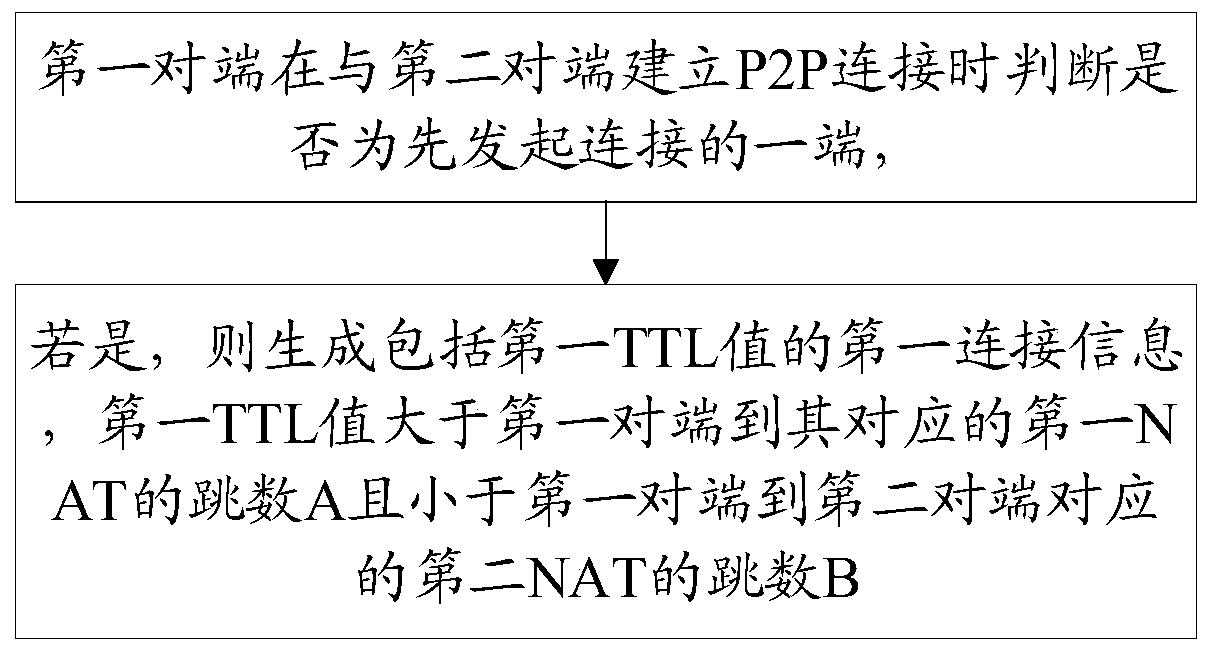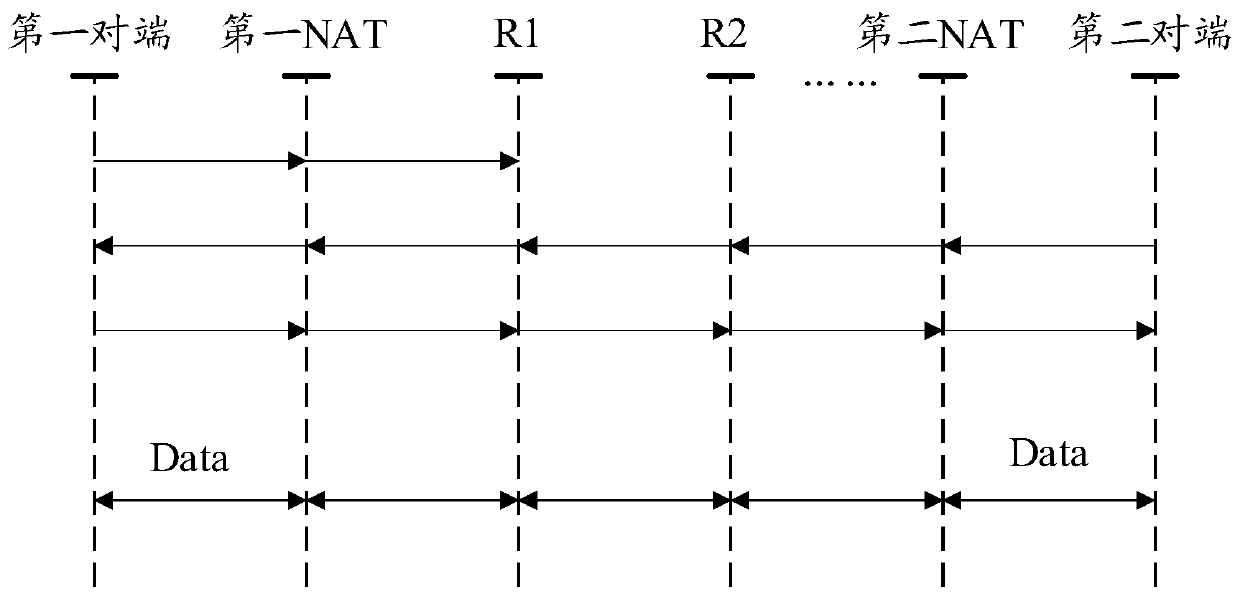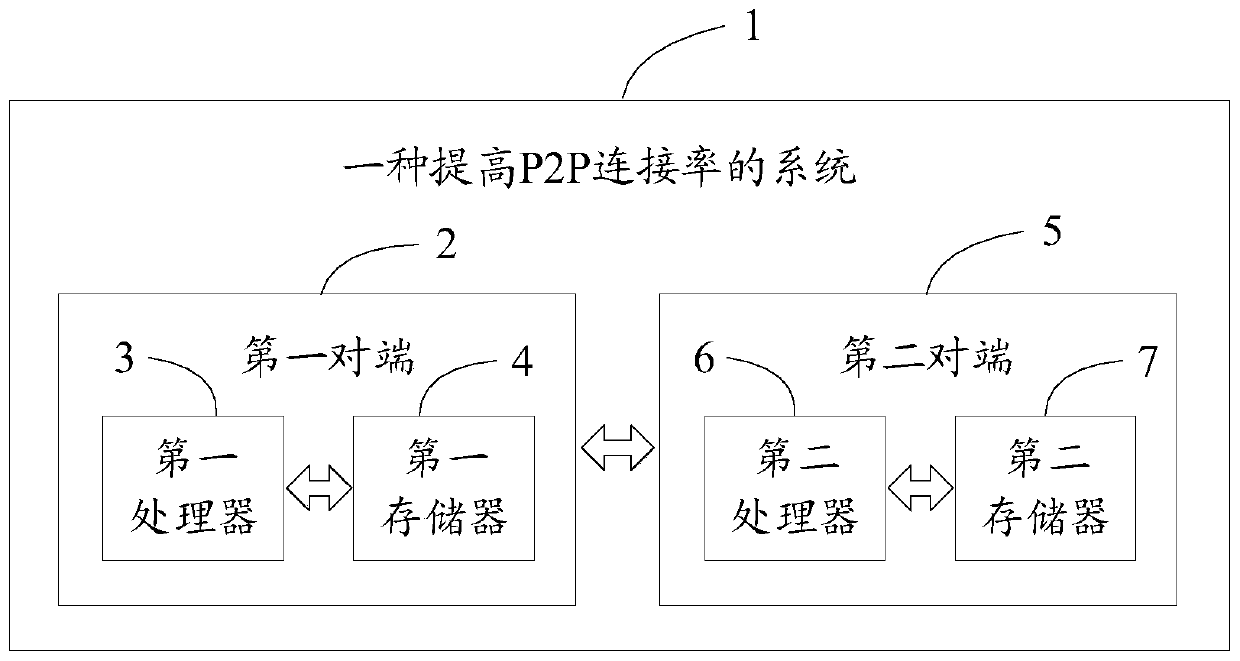Method and system for improving P2P connection rate
A technology of P2P connection and connection information, applied in the field of computer network, can solve problems such as port damage, consumption of bandwidth and memory, inability to establish P2P connection, etc., to achieve the effect of improving the connection success rate and the P2P connection rate.
- Summary
- Abstract
- Description
- Claims
- Application Information
AI Technical Summary
Problems solved by technology
Method used
Image
Examples
Embodiment 1
[0058] Please refer to figure 1 as well as figure 2 , Embodiment 1 of the present invention is:
[0059] When one peer is a LAN and the other is an external network, only one NAT is needed for conversion. If two peers are on a LAN and are in different LANs, each peer needs a NAT for conversion. The translation address, namely, the name of the first peer and its corresponding first NAT and first connection information in this embodiment, and the second peer and its corresponding second NAT and second connection information. In this case, it is necessary to use an intermediate server with a unique IP. Because the unique IP of the intermediate server is fixed and known, let both devices send data packets to the intermediate server, and the intermediate server can know the public network IP of the two devices. , before the device P2P communication, first go to the intermediate server to find the IP:Port of the other party, and then Symmetric NAT needs to allocate the pre-used p...
Embodiment 2
[0068] Please refer to figure 1 as well as figure 2 , the second embodiment of the present invention is:
[0069] In P2P connection, if you need to use NAT for address translation, you need to send keep-alive information to NAT regularly to keep alive. For the situation that keep-alive information will always be sent to the peer to increase the pressure on the peer, provide Provided is a method for improving the P2P connection rate, comprising steps after step S1:
[0070] S3. The first peer judges whether the preset keep-alive time has been reached, and if so, generates keep-alive information including a second TTL value. The second TTL value is greater than the hop count A from the first peer to the first NAT and less than the first The number of hops C from the peer end to the second peer end.
[0071] In this embodiment, the second TTL value is also A+1, so that when the keep-alive information reaches the set "hop count" of the second TTL value, the information is no l...
Embodiment 3
[0073] Please refer to image 3 , Embodiment three of the present invention is:
[0074] A system 1 for improving the P2P connection rate, including a first peer 2 and a second peer 5, the first peer 2 includes a first memory 4, a first processor 3 and is stored in the first memory 4 and can be stored in the first memory 4 The first computer program that runs on the first processor 3, the second peer 5 includes a second memory 7, a second processor 6, and a second computer program that is stored on the second memory 7 and can run on the second processor 6. The computer program, when the first processor 3 executes the first computer program, implements step S1 of the first embodiment above, and when the second processor 6 executes the second computer program, implements step S2 of the first embodiment above.
PUM
 Login to View More
Login to View More Abstract
Description
Claims
Application Information
 Login to View More
Login to View More - R&D
- Intellectual Property
- Life Sciences
- Materials
- Tech Scout
- Unparalleled Data Quality
- Higher Quality Content
- 60% Fewer Hallucinations
Browse by: Latest US Patents, China's latest patents, Technical Efficacy Thesaurus, Application Domain, Technology Topic, Popular Technical Reports.
© 2025 PatSnap. All rights reserved.Legal|Privacy policy|Modern Slavery Act Transparency Statement|Sitemap|About US| Contact US: help@patsnap.com



